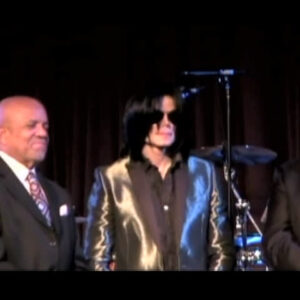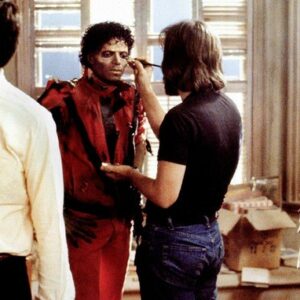Cillian Murphy’s career is a testament to the transformative power of acting, where a performer can transcend the superficial layers of their roles to deliver something deeply human and enduring. In an industry often dominated by spectacle and high-concept plots, Murphy has consistently chosen projects that emphasize emotional depth, character evolution, and introspective storytelling. His ability to navigate the most complex and multifaceted characters with an understated intensity has earned him a unique place in modern cinema and television. Through his roles in projects like Peaky Blinders, 28 Days Later, and Inception, Murphy has shaped a narrative trend that prioritizes character development over plot-driven spectacle, highlighting the growing demand for stories that resonate on a more personal and emotional level.
Introduction to Cillian Murphy’s Career
Cillian Murphy, born in Cork, Ireland, in 1976, did not begin his career with aspirations to become a movie star. A musician at heart, Murphy initially flirted with a career in rock music before finding his true calling in acting. His early work in theater, particularly his collaboration with director Enda Walsh in Disco Pigs (1996), showcased a raw, unfiltered talent that would become his trademark. This early exposure to the intricacies of human emotion and interpersonal dynamics helped Murphy cultivate a nuanced approach to his craft that would define the rest of his career.
Murphy’s transition to film was marked by a series of increasingly prominent roles in independent cinema, but it was Danny Boyle’s 28 Days Later (2002) that truly put him on the international stage. His portrayal of Jim, a man waking up to an apocalyptic world overrun by a zombie-like plague, was a masterclass in vulnerability and survival. Murphy imbued the character with a sense of isolation and quiet determination, contrasting the chaos of the world around him. This role set the stage for a career where Murphy would continuously seek out characters that forced him to plumb the depths of human experience, often in dark and challenging environments.
Character-Driven Narrative
At the heart of Murphy’s success is his affinity for character-driven narratives, a style of storytelling that prioritizes the development and transformation of its characters over the plot. In a character-driven story, the narrative emerges organically from the choices, emotions, and inner turmoil of the protagonists. The audience is not simply a spectator to events; they are deeply embedded in the emotional and psychological journeys of the characters themselves.
Unlike action-centric or plot-heavy films that rely on external circumstances to propel the story forward, character-driven stories focus on the internal landscapes of their characters. These narratives are often quieter, slower-paced, and more introspective, requiring both the actor and the audience to engage with the material on a deeper emotional level. Murphy’s roles have consistently embodied this approach, offering viewers a glimpse into the complex psyche of his characters while demanding their full attention and empathy.
Films like The Wind That Shakes the Barley (2006) exemplify this type of narrative. In the film, Murphy plays Damien, an Irish revolutionary caught in the throes of Ireland’s fight for independence. The movie is not a simple recounting of historical events; rather, it is a deeply personal exploration of loyalty, sacrifice, and the moral ambiguities of war. Murphy’s performance is understated yet powerful, revealing the emotional toll of conflict in a way that transcends the historical specifics of the narrative. It is precisely this kind of character-driven storytelling that has defined Murphy’s career and set him apart from many of his contemporaries.
Murphy’s Approach to Acting
Murphy is known for his immersive approach to acting, often disappearing into his roles in a way that makes it difficult to separate the actor from the character. His performances are marked by a meticulous attention to detail, whether it’s the way he holds his body, his accent, or the subtle shifts in his facial expressions. He has a gift for conveying complex emotions with a simple glance or gesture, drawing the audience into the inner world of his characters.
One of the most iconic examples of Murphy’s immersive technique can be seen in Peaky Blinders (2013–2022), where he plays Thomas Shelby, the ruthless yet vulnerable leader of the Shelby crime family. Shelby is a character of contradictions—he is at once a cold, calculating businessman and a deeply scarred war veteran haunted by his past. Murphy brings a quiet intensity to the role, revealing the layers of pain, ambition, and guilt that drive Shelby’s every decision. His performance elevates the show from a standard crime drama to a complex character study, where the real tension lies not in the external conflicts but in the psychological and emotional battles waged within Shelby’s mind.
Similarly, in 28 Days Later, Murphy’s portrayal of Jim is a study in emotional transformation. When we first meet Jim, he is disoriented, vulnerable, and afraid, having just woken up to a world in ruins. Over the course of the film, Jim evolves from a passive survivor into a determined leader, capable of both great compassion and brutal violence. Murphy’s ability to convey this transformation with subtlety and restraint makes Jim’s journey all the more compelling, allowing the audience to experience his emotional arc in a visceral, deeply personal way.
Shaping the Trend
Murphy’s dedication to character-driven storytelling has not only defined his own career but has also influenced the broader landscape of modern cinema and television. His performances have inspired a new generation of actors, filmmakers, and writers to prioritize character development as the driving force behind their stories. By choosing roles that focus on emotional depth and psychological complexity, Murphy has helped shift the industry’s focus away from plot-driven spectacle and towards more intimate, character-focused narratives.
Murphy’s influence can be seen in the rise of television series and films that prioritize character development over action. Shows like Breaking Bad and The Crown owe much of their success to the character-driven storytelling model that Murphy has championed throughout his career. These shows, much like Murphy’s own work, draw the audience into the emotional lives of their characters, making them invest in the protagonists’ journeys on a deeply personal level. The success of such series suggests that audiences are hungry for more nuanced, emotionally resonant stories, a trend that Murphy has played a significant role in shaping.
In addition to influencing other actors and creators, Murphy’s performances have also had a broader impact on the types of stories being told in the industry. His ability to bring a sense of quiet intensity and emotional complexity to his roles has encouraged filmmakers to take risks on projects that might not conform to traditional blockbuster formulas. Directors like Christopher Nolan, with whom Murphy has collaborated on several occasions, have used Murphy’s talents to explore the deeper, more introspective aspects of their characters. In films like Inception (2010) and Dunkirk (2017), Murphy’s performances add layers of emotional depth that elevate the films beyond their high-concept premises, proving that character-driven storytelling can thrive even in the context of large-scale productions.
Impact on Modern Storytelling
As character-driven narratives have become more prevalent in modern cinema and television, Murphy’s contributions to the genre have become increasingly apparent. His performances have not only raised the bar for actors but have also contributed to the overall shift towards more introspective, emotionally rich storytelling. In a world where action-packed blockbusters and plot-driven spectacles often dominate the box office, Murphy’s work serves as a reminder of the power of character development and emotional authenticity.
Moreover, Murphy’s influence can be seen in the growing popularity of “slow burn” narratives, where the focus is on gradual character development rather than fast-paced action. Films like A Ghost Story (2017) and First Reformed (2017) are prime examples of this trend, where the emotional journey of the protagonist takes precedence over the events of the plot. These films, much like Murphy’s own work, challenge the audience to engage with the material on a deeper level, asking them to invest in the emotional lives of the characters rather than simply being entertained by spectacle.
Looking Forward
As we look to the future of storytelling in both cinema and television, it’s clear that Murphy’s contributions will continue to inspire new generations of actors, filmmakers, and writers. The trend towards character-driven narratives shows no signs of slowing down, and Murphy’s work has played a pivotal role in this evolution. His ability to bring emotional depth and psychological complexity to his roles has set a new standard for storytelling, proving that audiences are eager for stories that resonate on a more personal and emotional level.
In a rapidly changing industry where spectacle often takes precedence, Cillian Murphy remains a beacon of what is possible when character development becomes the central force in storytelling. As the demand for more nuanced, emotionally resonant narratives continues to grow, Murphy’s influence will undoubtedly shape the future of modern cinema and television, ensuring that the power of character-driven storytelling remains at the forefront of the industry for years to come.





